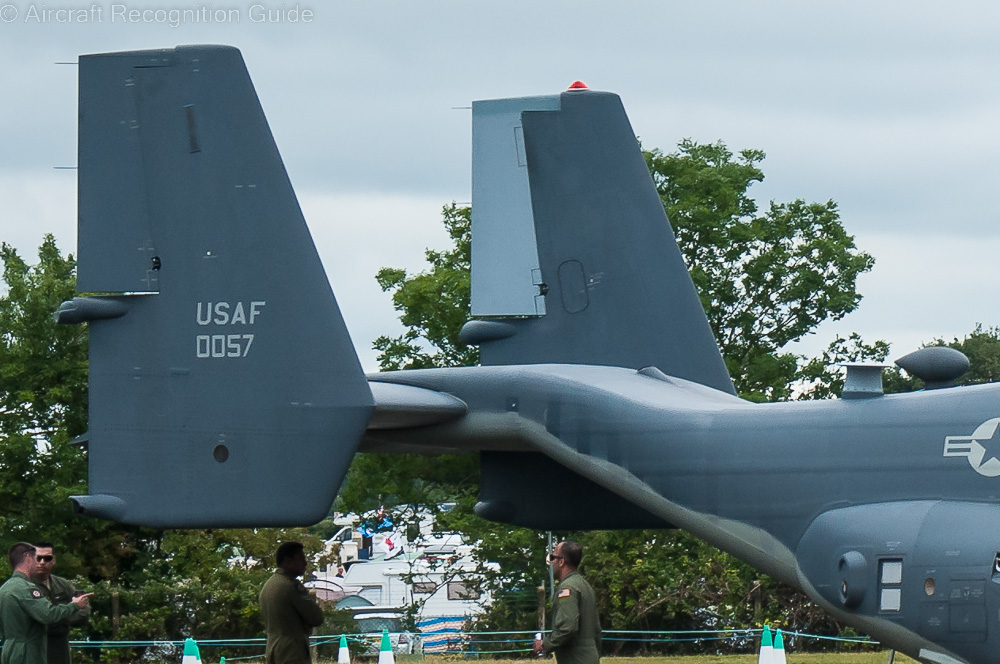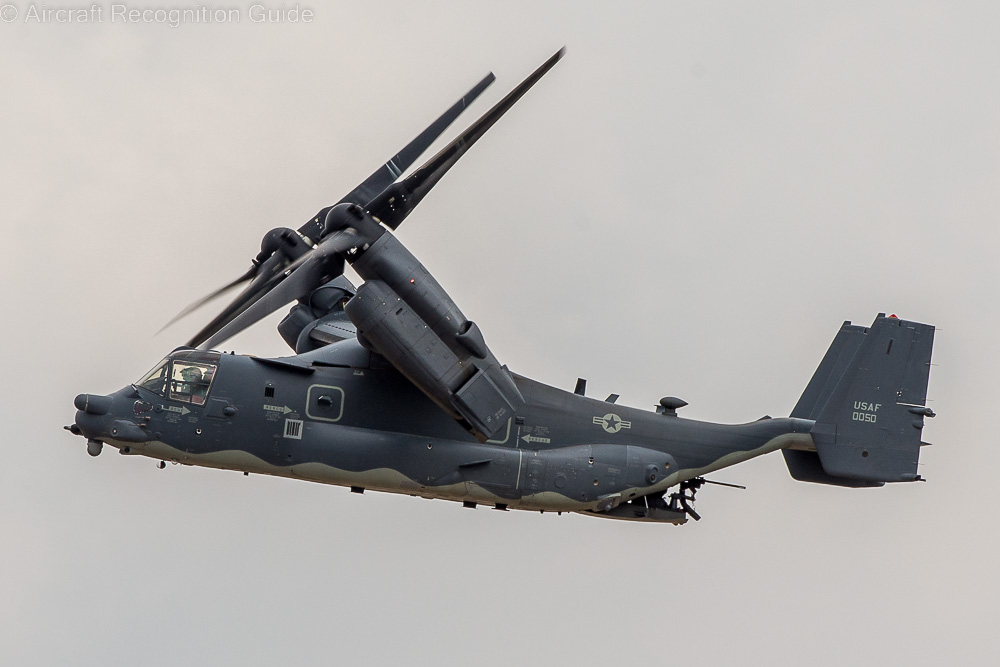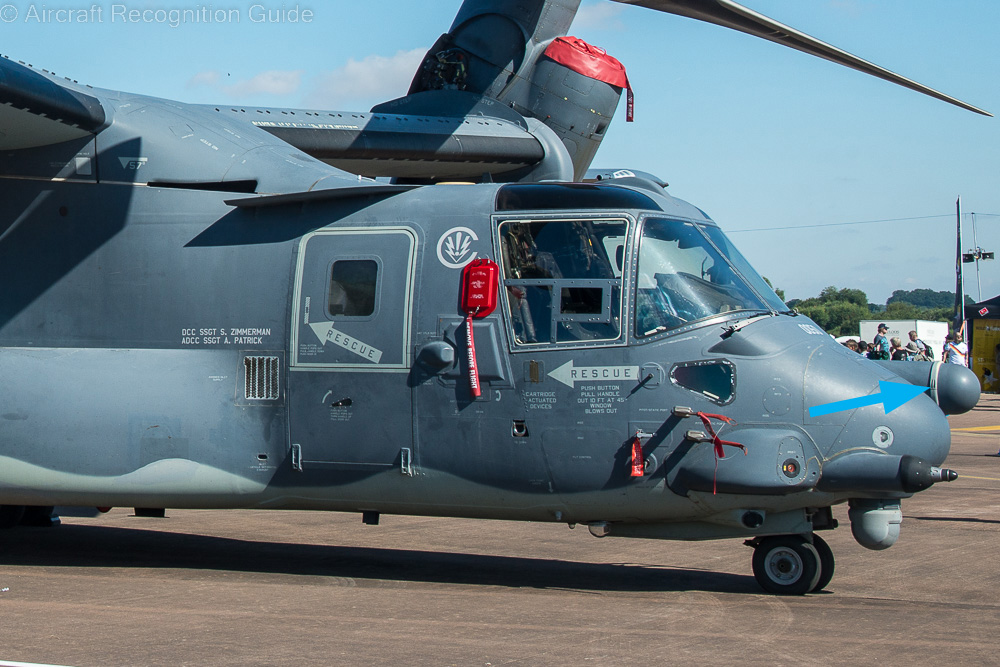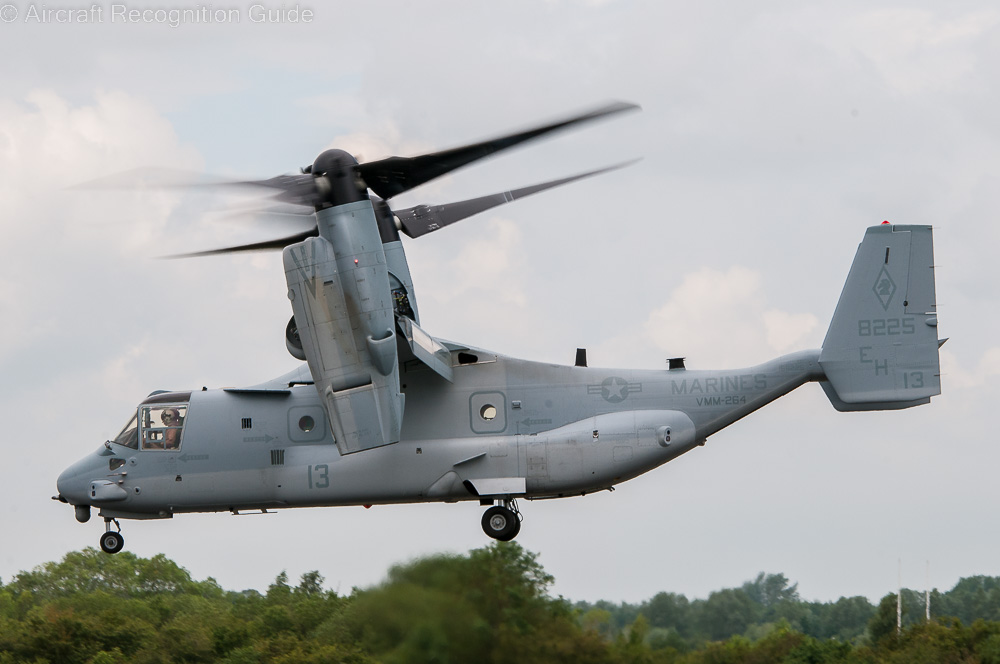
Bell-Boeing V-22 Osprey
The Osprey can be considered as the first successful tiltrotor aircraft. Several hundreds have been built so far. It was developed from the Bell XV-15 research aircraft. Essentially, it is an enlarged version of it. The V-22 has a 'regular' fuselage, although the large cockpit windows are more like those often found on helicopters. There is a retractable refuelling probe at the lower right side of the nose. At the end the rear fuselage slopes up, enabling loading via a ramp than can be lowered. Above is an H-tail, of which the majority of the vertical stabilisers is above the horizontal ones. The aircraft has a retractable landing gear with double wheels on all legs. The main gear retracts in bulges at the sides of the fuselage. The Osprey has fairly short wings with big nacelles at the tips. The whole nacelles can be tilted ninety degrees, from fully forward to vertical. Typical are the rectangular exhausts at the back. The turbo engines power three-blade rotors/propellers with blunt spinners.
Different versions
The different versions of V-22 can be distinguished by looking at
- the number and shape of sensors on the nose
- the size of the cockpit windows at the feet level
- the size of the main landing gear doors
- the shape of the sponsons at the side of the lower fuselage
V-22A
Naturally, being a new technology aircraft everything had to be tested well. Hence four V-22A prototypes were built. They are characterised by a lack of sensors on the nose and side of the fuselage. Also, it has larger cockpit windows at the level of the crew's feet. Finally, the gear doors of the main gear are larger than on the production versions.
Three features make this a V-22A: the large cockpit windows near the crew's feet, the absence of sensors and the large main landing gear doors. (photo: Tim Spearman)
CV-22B
The USAF version of the Osprey is designated CV-22B and is used for special operations. Compared to the US Marines MV-22Bs it has an extra sensor on top of the nose, off centre to the left, and one halfway the trailing edge of the vertical stabilisers. Other sensors remain. With respect to the V-22A above it has smaller bottom cockpit windows and smaller main landing gear doors.
CMV-22B
As a replacement for the Grumman C-2 Greyhound a new carrier-on-board-delivery (COD) version of the Osprey was developed, called CMV-22B. It has an enlarged fuel storage because the sponsons have been widened in front of the main landing gear. For the rest it is externally the same as the MV-22B.
Thanks to widened sponsons, but only in front of the main gears, the CMV-22B can fly farther than the standard MV-22B. And it allows us to recognise it easier. (photo: US Navy/WikiMedia)
MV-22B
The most popular version of the V-22 family is the MV-22B, operated by the United States Marine Corps and the Japanese Ground Self-Defense Force. Externally, it is nearly the same as the CV-22B, but with less sensors on the nose and tail.
An MV-22B of the US Marine Corps in slightly forward flight. Note the lack of bulge on top of the nose and less antennas extending from the trailing edge of the vertical fins compared to the CV-22B.
The nose of the MV-22B is 'cleaner' compared to that of the CV-22B. Still there are multiple sensors.
Confusion possible with
Bell 301/XV-15
Essentially, the V-22 is a much larger development of the XV-15 research tiltrotor. It has the same basic shape as the Osprey, including H-tail, three-blade rotors and double wheels on all gears. The nacelles of the Bell are smaller and have round exhausts. Also, the vertical stabilisers' trailing edge is swept.









